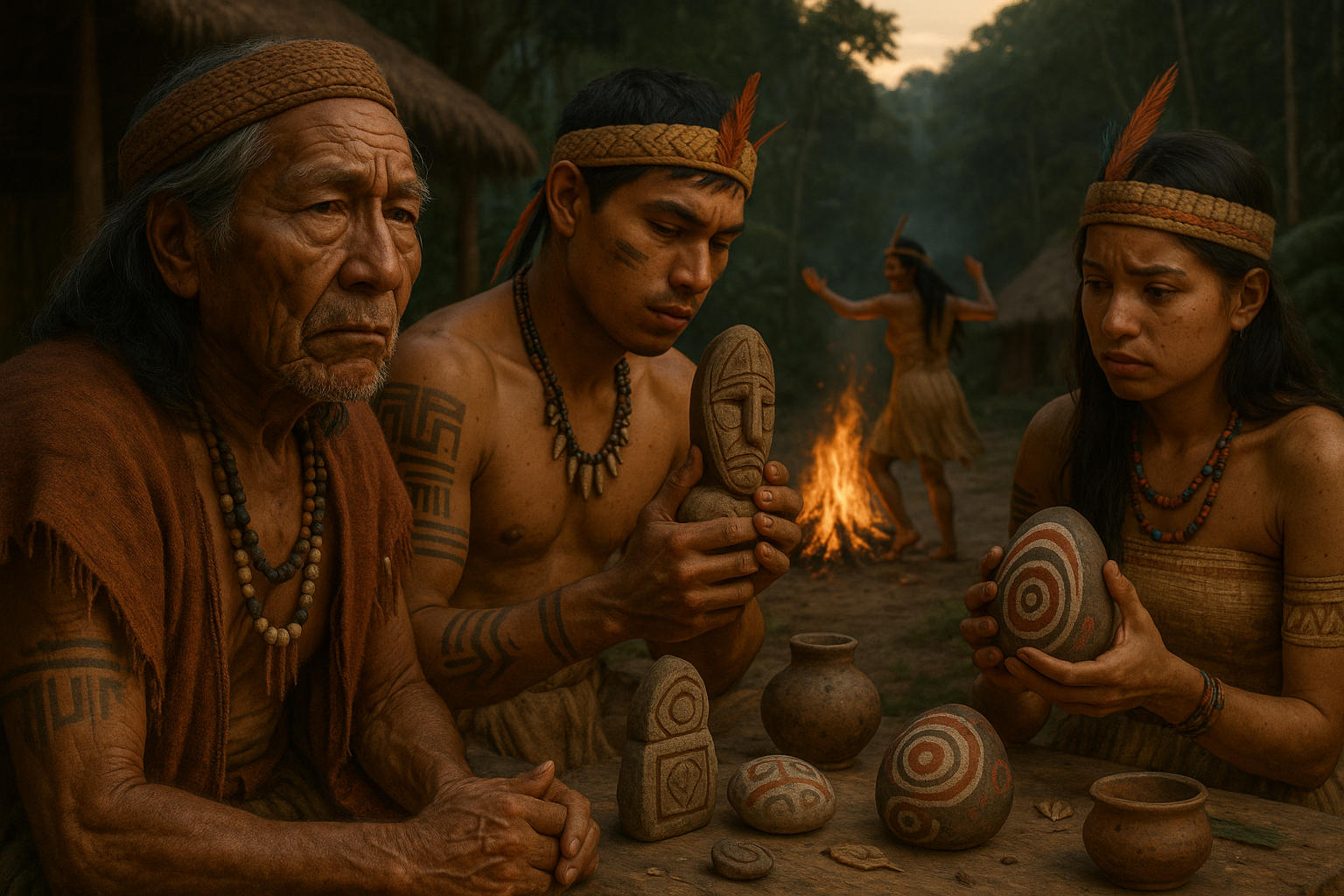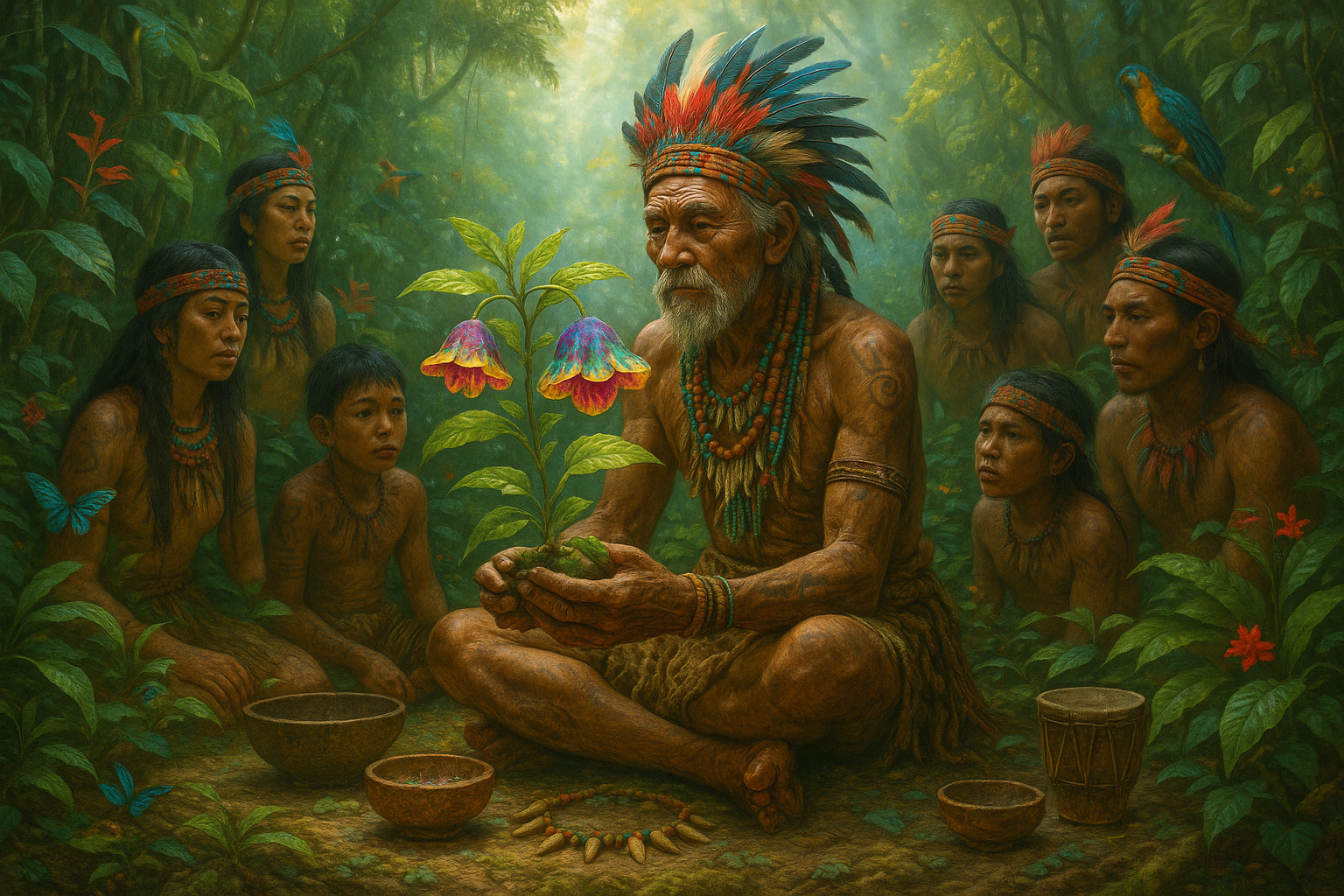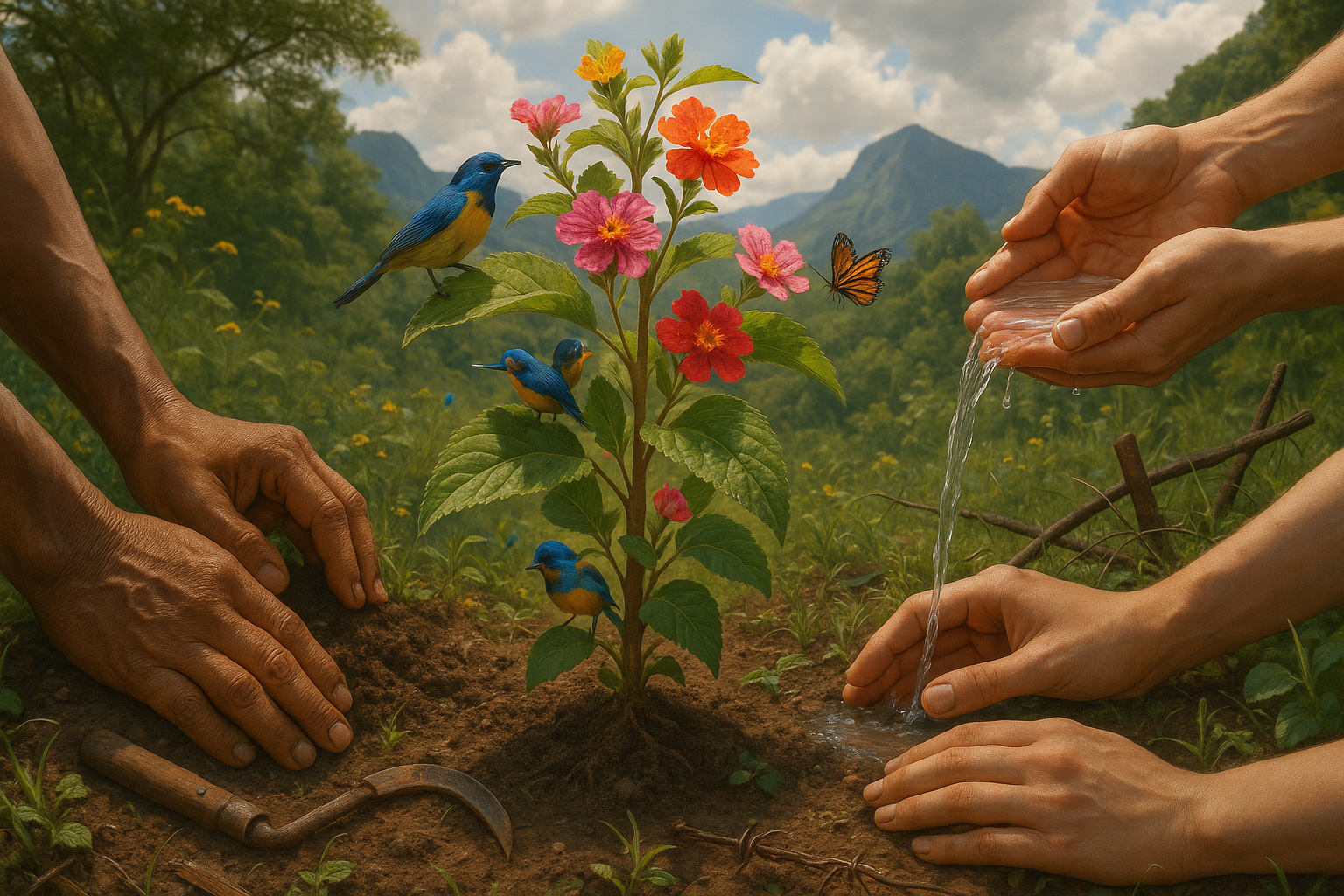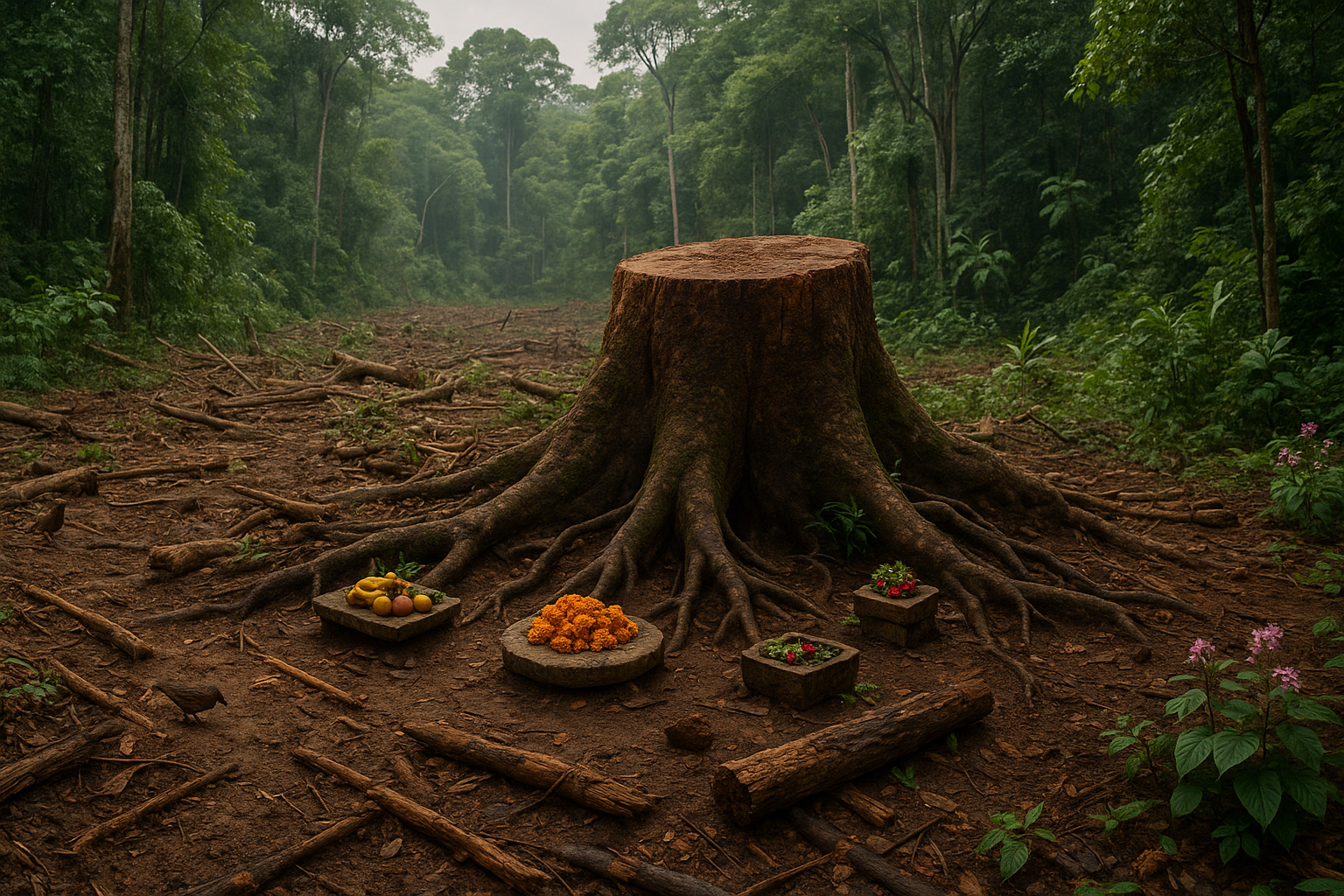In the heart of many cultures, sacred ritual plants hold a place of reverence and deep spiritual significance. These plants are not merely components of traditional ceremonies; they are living symbols of heritage, belief, and the intricate bond between humanity and nature. Yet, as the specter of climate change looms larger each day, these treasured botanical allies face unprecedented threats. The world’s shifting climate is not only altering ecosystems but also imperiling the very plants that have been venerated for generations. 🌿
Imagine a sacred ceremony where the fragrant aroma of burning sage purifies the air, or a vibrant ayahuasca ritual that connects participants to a realm beyond the physical. These experiences, steeped in tradition, are increasingly at risk as climate change disrupts weather patterns, decimates habitats, and accelerates the extinction of key plant species. The intricate dance between tradition and nature is being disturbed, leaving communities around the globe grappling with the loss of cultural and spiritual anchors.
The relationship between ritual plants and their native environments is delicate and symbiotic. These plants have adapted over centuries to their specific climates and conditions. However, rising temperatures, erratic rainfall, and extreme weather events are pushing many species to the brink. As habitats shrink or shift, the plants that once thrived in abundance now face the threat of becoming botanical relics of the past.
Consider peyote, a cactus integral to Native American spiritual practices. Its slow growth and specific habitat requirements make it particularly vulnerable to climate-induced habitat changes. As the desert landscapes that peyote calls home experience more intense droughts and higher temperatures, its survival hangs in the balance. Similarly, the sacred iboga plant of Central Africa, used in Bwiti ceremonies, is under siege from deforestation and shifting climate zones. These are not isolated cases but part of a growing trend that sees sacred plants becoming casualties of a rapidly changing world.
In this exploration of “Vanishing Treasures: Climate Change’s Impact on Sacred Ritual Plants,” we delve into the stories of these plants and the cultures that cherish them. We’ll uncover how climate change is not just a scientific issue but a cultural crisis, threatening the very fabric of indigenous and local traditions. 🌍
We will begin by examining the historical and cultural significance of sacred plants, understanding their roles beyond the botanical. These plants are woven into the spiritual and social tapestries of communities, serving purposes that extend from healing to divine communication. Next, we will analyze the specific threats posed by climate change to these plants, supported by scientific insights and case studies from around the world.
Furthermore, we will highlight the resilience and adaptation strategies being employed by communities and conservationists alike. From innovative cultivation techniques to legal protections and awareness campaigns, there are efforts underway to preserve these cultural treasures. However, the question remains: will these measures be enough to counteract the rapidly advancing impacts of climate change?
Finally, we will explore the broader implications of losing these sacred plants. How does the disappearance of a plant reverberate through cultural identity, spirituality, and the connection between humans and nature? What does it mean for future generations who may never experience the full spectrum of their heritage? These are questions without easy answers but are crucial for understanding the stakes involved.
By the end of this journey, it will be clear that the fate of sacred ritual plants is intertwined with our global response to climate change. Their preservation requires not just scientific intervention but a reevaluation of our relationship with nature. 🌱
Join us as we embark on this enlightening exploration. We will uncover the hidden connections between climate change and cultural heritage, highlighting the urgent need for action to protect these invaluable parts of our world’s spiritual ecology. This is more than an environmental issue; it is a call to honor and safeguard the legacies of those who came before us and ensure they remain for those yet to come. 🛡️
# Vanishing Treasures: Climate Change’s Impact on Sacred Ritual Plants
## The Intersection of Climate Change and Cultural Heritage
The world is witnessing unprecedented changes in climate patterns, with far-reaching effects on both the natural environment and cultural heritage. Sacred ritual plants, integral to various indigenous and spiritual practices worldwide, are facing significant threats due to climate change. These plants hold profound cultural and spiritual significance, serving as a bridge between humanity and the divine. 🌿
Climate change manifests through rising temperatures, altered precipitation patterns, and increased frequency of extreme weather events. These factors collectively contribute to habitat loss and shifts in geographical distribution for many plant species. For communities that depend on these sacred plants for religious ceremonies and traditional medicine, the impacts are deeply personal and profound.
For example, in the Andes, the San Pedro cactus (Echinopsis pachanoi), used in spiritual ceremonies, is threatened by changing rainfall patterns and rising temperatures. The disappearance of such plants is not just a loss of biodiversity; it’s a loss of cultural identity and spiritual continuity. To truly appreciate the significance of this issue, one must understand the role these plants play in their respective cultures.
### The Role of Sacred Plants in Indigenous Practices
Indigenous cultures across the globe have long utilized sacred plants in rituals and healing practices, often attributing spiritual powers and cultural significance to them. These plants are more than mere botanical specimens; they are integral to the cultural fabric and spiritual life of communities. 🌍
Take, for instance, the Ayahuasca vine (Banisteriopsis caapi), used by Amazonian tribes in ceremonial contexts for centuries. This plant facilitates communication with the spiritual realm and is central to the cultural identity and spiritual health of these communities. However, deforestation and climate change threaten its availability, thereby endangering the rituals and traditions dependent on it.
**Table: Key Sacred Plants and Their Cultural Significance**
| Plant Name | Cultural Significance | Threats Due to Climate Change |
|---|---|---|
| Ayahuasca | Spiritual communication, healing | Deforestation, changing precipitation |
| San Pedro Cactus | Visionary rituals, ancestral worship | Rising temperatures, habitat loss |
| Peyote | Native American spiritual practices | Overharvesting, climate shifts |
The table above illustrates the diversity of sacred plants and the specific climate-related threats they face. This loss has far-reaching implications, affecting not only biodiversity but also cultural heritage. By understanding these impacts, we can advocate for the preservation of both natural and cultural resources.
### Climate Change’s Effects on Biodiversity and Ecosystems
The impact of climate change on biodiversity is a pressing concern for conservationists and cultural advocates alike. Ecosystems are delicate networks where each species plays a crucial role, and the disruption of these networks due to climate change can have catastrophic consequences.
The loss of sacred plants affects not only the plant species themselves but also the broader ecosystems they inhabit. For instance, the decline of the Peyote cactus (Lophophora williamsii), a plant of spiritual importance to many Native American tribes, affects the desert ecosystems of North America. Peyote’s decline impacts the animals and insects that rely on it, demonstrating the interconnectedness of ecosystems.
Increased temperatures and altered rainfall patterns have led to shifts in the distribution of many plant species. This shift often results in a mismatch between the plants and the ecosystems they historically inhabited. As plants move to higher altitudes or latitudes in search of suitable climates, they may outcompete or be outcompeted by native species, leading to ecological imbalances.
**Watch this insightful video on the effects of climate change on biodiversity: [The Impact of Climate Change on Biodiversity – National Geographic](https://www.youtube.com/watch?v=G4H1N_yXBiA).**
### Community Resilience and Adaptation Strategies
Communities that rely on sacred plants for cultural and spiritual practices are not passive victims of climate change. Instead, they exhibit remarkable resilience and have developed adaptation strategies to combat these challenges. Empowering these communities and learning from their adaptive practices can offer valuable insights into sustainable living and climate resilience.
One such strategy is the preservation of traditional ecological knowledge (TEK), which involves a deep understanding of local ecosystems and sustainable resource management. Indigenous communities often possess a rich repository of TEK, enabling them to adapt to changing environmental conditions and preserve their cultural practices.
**Examples of Community-Led Adaptation Strategies:**
- Community seed banks to preserve and propagate sacred plant species.
- Traditional ecological knowledge-sharing workshops.
- Collaborative conservation efforts with environmental organizations.
Community-driven efforts, such as reforestation and habitat restoration projects, play a pivotal role in safeguarding sacred plants. By restoring degraded ecosystems and promoting biodiversity, these projects enhance the resilience of both the plants and the communities that depend on them.
Furthermore, some communities are engaging in advocacy and policy initiatives to ensure the protection of sacred plants and their habitats. By raising awareness about the cultural and spiritual significance of these plants, they aim to influence environmental policies and garner support for conservation efforts.
## The Spiritual Significance of Sacred Plants in a Changing World
The spiritual connection between humans and sacred plants transcends time and space, offering insights into the interconnectedness of all living beings. In a rapidly changing world, this connection takes on new significance, inviting us to reflect on our relationship with nature and our responsibilities toward preserving it.
Many spiritual traditions view sacred plants as teachers or guides, offering wisdom and healing to those who engage with them. This perspective underscores the importance of respecting and preserving these plants, not only for their ecological roles but also for their spiritual and cultural contributions.
Climate change challenges us to rethink our relationship with the natural world and to seek harmony with it. By acknowledging the spiritual significance of sacred plants, we can cultivate a deeper appreciation for biodiversity and the need for its protection. 🌱
Incorporating spirituality into environmental conservation efforts can inspire new approaches to sustainability and resilience. By recognizing the intrinsic value of sacred plants, beyond their ecological and cultural roles, we can foster a more holistic understanding of our place in the world.
**Further Exploration:**
To delve deeper into the spiritual significance of sacred plants, consider watching this thought-provoking video: [Sacred Plants and Their Healing Powers – Spirit Science](https://www.youtube.com/watch?v=7syQ6qDFV9M).
### Conclusion: A Call to Action
While this article does not conclude the discussion, it serves as a call to action for individuals, communities, and policymakers. The preservation of sacred ritual plants is not just an environmental issue; it is a cultural and spiritual imperative. By embracing a holistic approach that values biodiversity, cultural heritage, and spiritual wisdom, we can work towards a more sustainable and harmonious future. 🕊️
In the face of climate change, our actions today will determine the legacy we leave for future generations. By supporting conservation efforts, advocating for sustainable policies, and respecting the spiritual significance of sacred plants, we can ensure that these treasures do not vanish but continue to thrive for centuries to come.
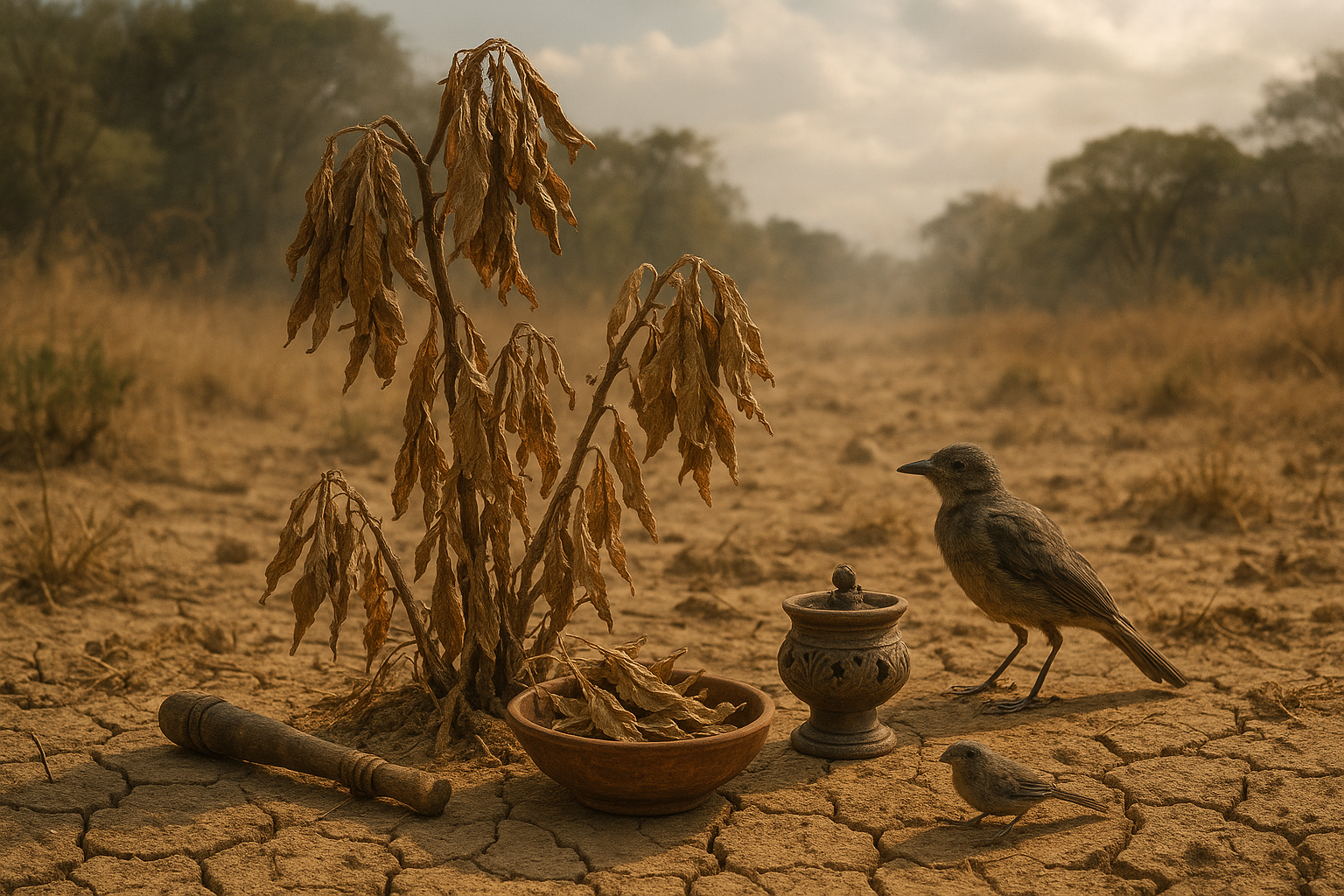
Conclusion: Preserving the Sacred and the Natural 🌿
In conclusion, the exploration of climate change’s impact on sacred ritual plants, as discussed in “Vanishing Treasures: Climate Change’s Impact on Sacred Ritual Plants,” reveals a critical intersection of environmental science and cultural heritage. Throughout this discussion, we have examined how climate change threatens the existence of these invaluable natural resources, which hold profound cultural, spiritual, and medicinal significance for numerous communities worldwide.
The key points highlighted include the vulnerability of sacred plants to changing weather patterns, habitat destruction, and the resulting loss of biodiversity. We also addressed the cultural ramifications, emphasizing how the loss of these plants can lead to a breakdown in cultural traditions and spiritual practices that have been maintained for centuries.
The significance of this issue extends beyond environmental and cultural dimensions. It also encompasses ethical considerations, as we ponder our responsibility towards preserving the earth’s biodiversity and respecting the cultural practices of indigenous and local communities. 🌍
Recognizing the urgency of this situation, it is imperative for policymakers, conservationists, and communities to collaborate on sustainable strategies. These include preserving natural habitats, fostering community-based conservation initiatives, and integrating traditional knowledge with modern conservation practices. By doing so, we not only safeguard the environment but also preserve the rich tapestry of human culture and spirituality that is intricately woven with these plants.
As we conclude this exploration, let us reflect on our role in this global challenge. Each of us can contribute to the preservation of these sacred treasures by raising awareness, supporting conservation efforts, and advocating for policies that protect both the environment and cultural heritage.
We encourage you to share this knowledge and initiate discussions within your communities. By spreading awareness and engaging in collective action, we can make a significant impact. Feel free to leave a comment below sharing your thoughts or experiences related to sacred plants and climate change. Together, we can inspire change and ensure that these natural and cultural legacies endure for generations to come. 🌱
Thank you for joining us on this journey of discovery and reflection. Let’s work towards a future where nature and culture thrive hand in hand.
—
For further reading and to stay informed, consider exploring reputable sources like [National Geographic](https://www.nationalgeographic.com), [World Wildlife Fund](https://www.worldwildlife.org), and [The Nature Conservancy](https://www.nature.org).
*Note: Please verify the links to ensure they lead to the intended content as URLs and website content can change.*
Toni santos is a cultural storyteller and botanical history researcher devoted to uncovering the hidden narratives of cryptobotany and lost plant lore. With a lens focused on forgotten flora, Gabriel explores how ancient communities discovered, used, and ritualized plants — seeing them not merely as resources, but as vessels of meaning, identity, and ancestral memory.
Fascinated by mythical plants, vanished species, and secret ethnobotanical knowledge, Gabriel’s journey weaves through herbal manuscripts, oral traditions, and forgotten botanical practices passed down in fragments. Each story he tells is a reflection on the power of plants to heal, connect, and preserve cultural wisdom across time.
Blending ethnobotany, folklore studies, and cultural storytelling, Gabriel researches the plants, uses, and rituals that once shaped societies — uncovering how lost plant lore reveals deep interconnections between belief, nature, and survival. His work honors the healers, shamans, and herbalists who safeguarded this knowledge beyond the reach of written history.
His work is a tribute to:
-
The sacred role of plants in ancestral rituals
-
The beauty of forgotten botanical knowledge and uses
-
The enduring link between nature, culture, and myth
Whether you are passionate about ancient herbal traditions, curious about plant folklore, or intrigued by the mysteries of cryptobotany, Gabriel invites you on a journey through green lore and living memory — one plant, one ritual, one story at a time.


